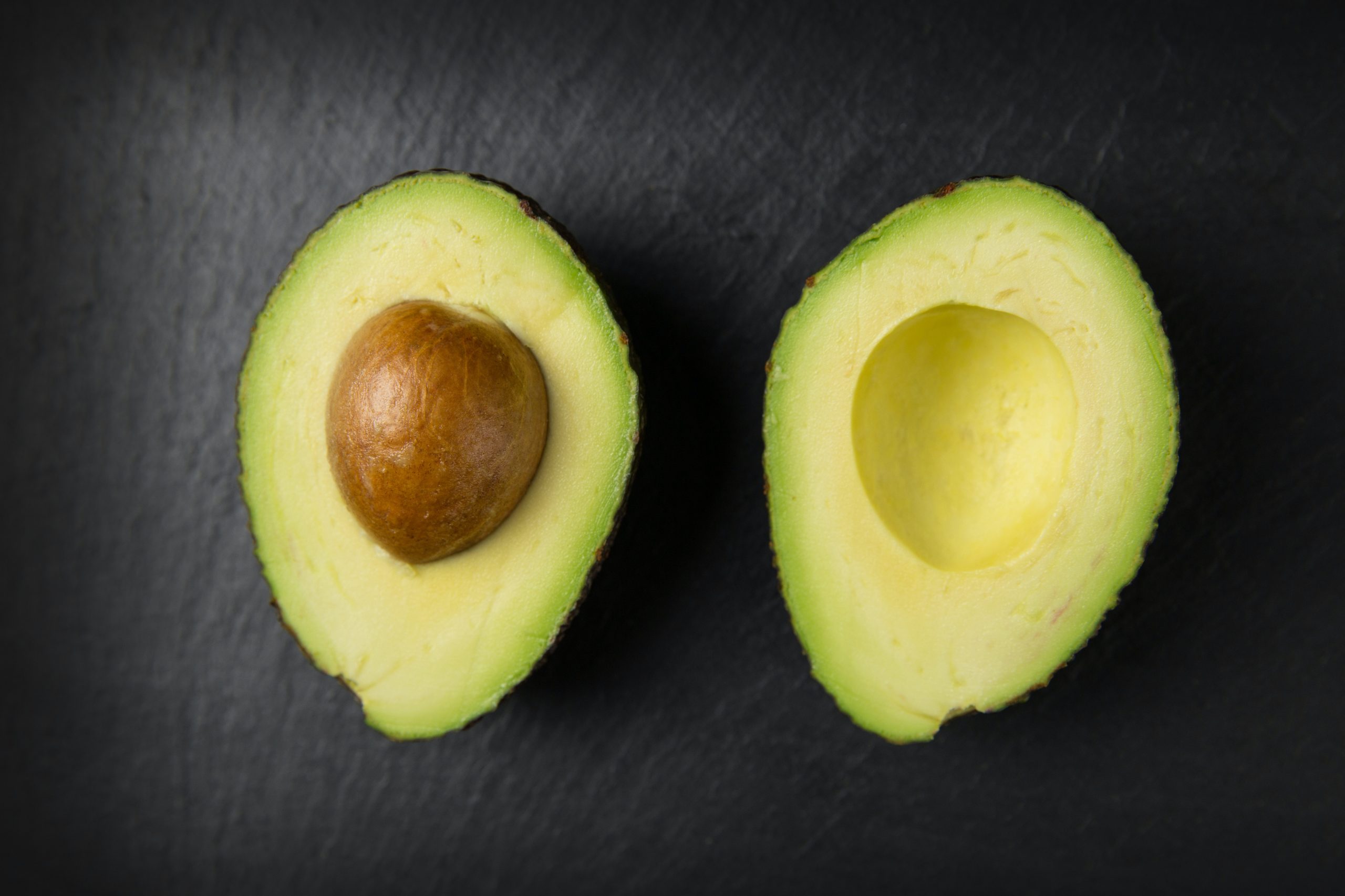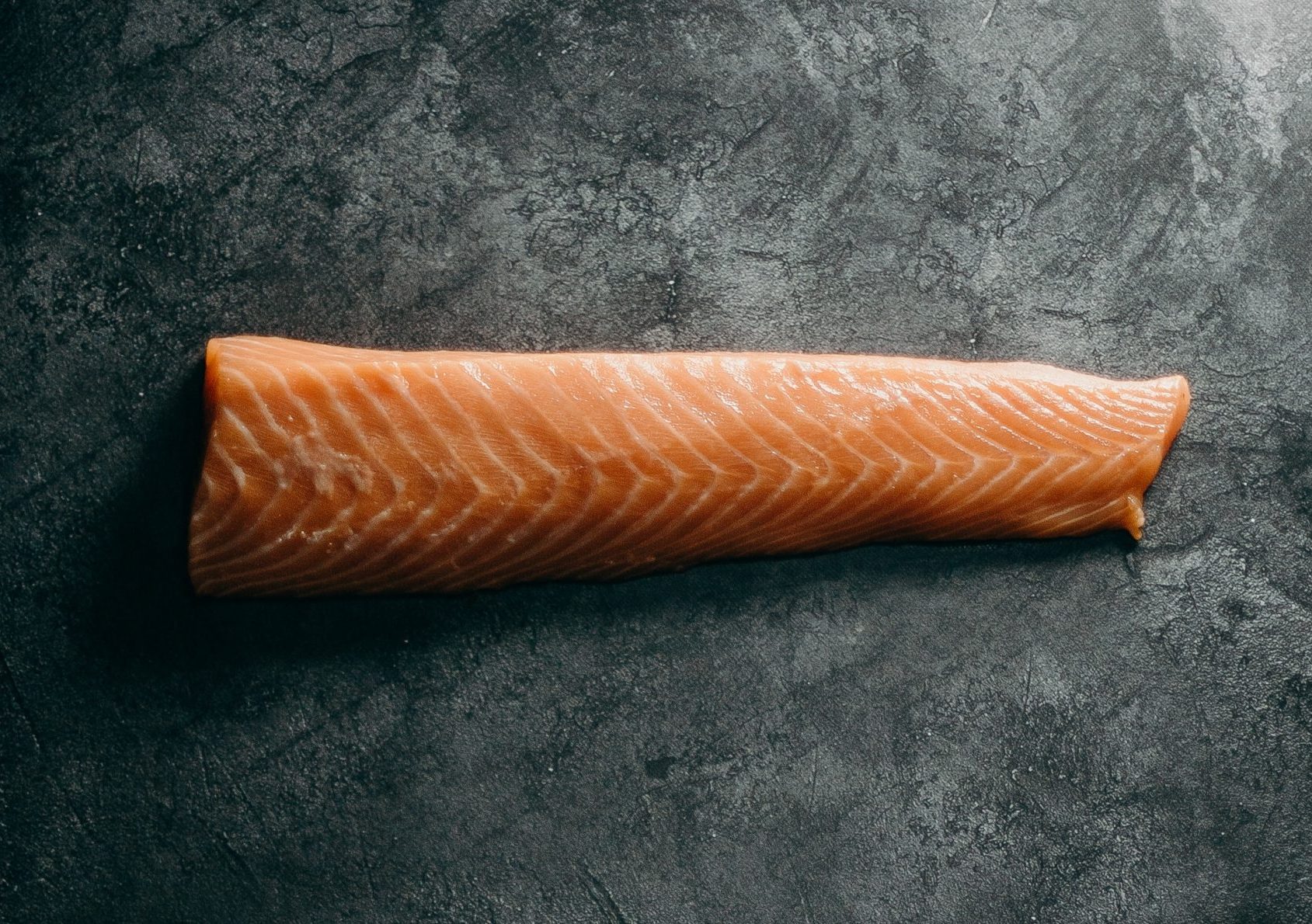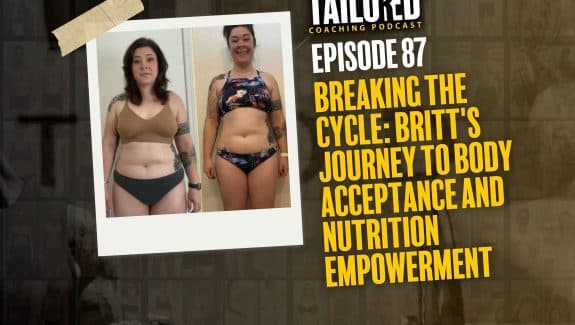Dietary fats are essential to give your body energy and to support cell growth, they help protect your organs and help keep your body warm. Fats help your body absorb some nutrients and produce important hormones, too.
Yes, your body definitely needs fat.
But, what amount of fat is really “right”?
Is it the non-plus-ultra like the Keto-fanatics are saying?
Or is too much fat, especially animal fat, part of the root cause for our obesity crisis and we are best to get most of our fats and diet in general from plant sources?
Or maybe it really doesn’t matter that much what kind of fat I am eating as long as I am not overweight or in a caloric surplus?
Or maybe healthy fats could be the remedy to my hormonal issues and therefore contribute to a happier and healthier life overall?
Before you hit the panic button, let’s slow down and examine how this blog is going to give you some of the answers to your fat-related questions once and for all.
First we will look into what fats actually are, the different kinds and how they affect your body differently.
We will look into which ones to focus on why they are important, but also to what extent and what their place really is in your diet, particularly considering various phases in your nutritional periodization (cutting, gaining, maintaining).
What are dietary fats, types of fat and their benefits
Might be pointing out the obvious, but fat is one of our three macronutrients (the other ones being carbs and protein). They provide needed energy in the form of calories. Fat is one of the two essential macronutrients (protein being the other one), which means the body can’t go without it or produce it on its own. Fat has 9 calories per gram, more than twice the number of calories in carbs and protein, which each have 4 calories per gram.
There are several types of fat — some good, some bad, some well understood and some less so. Trans fats are commonly considered unhealthy, while unsaturated fats — including monounsaturated and polyunsaturated fat — are considered healthy and saturated fats have been splitting opinions for decades now. But did you know that all foods that contain fats actually have a mix of fat types, according to the Harvard School of Public Health (1).
All fats have a similar chemical structure: a chain of carbon atoms bonded to hydrogen atoms. What makes one fat different from another is the length and shape of the carbon chain and the number of hydrogen atoms connected to the carbon atoms. What seems like slight differences in structure translates into crucial differences in form and function.
1. Saturated fats

Saturated fats are saturated with hydrogen molecules. Most of them come from animal sources, like red meats, poultry and full-or-reduced fat dairy products. Saturated fats are solid at room temperature.
Examples: lard, cheese and butter, palm oil, palm kernel oil and coconut oil…
In the past saturated fat has been believed to be linked to high cholesterol levels and an increased risk of cardiovascular disease. Because of this, the American Heart Association (AHA) still recommends getting only 5 to 6 percent of total calories from saturated fat. This puts someone on a 2,000-calorie-a-day diet with 117 calories or 13 grams of saturated fats per day. The 2010 U.S. Dietary Guidelines allow for up to 10 percent of calories to come from saturated fat. (2)
The government issued recommendations might seem a bit outdated to you, that is why we will go over some more recent studies later on to give you a clearer picture of saturated fats and how these associations even came to that conclusion. Stay tuned. In short we can say that there are some saturated fats that promote healthy cholesterol levels (and come with lots of other nutritional benefits) and some that don’t. It is the consumption of highly processed meats and foods that we need to look out for.
TIP: For your saturated fat sources try to buy as high quality as you can afford, such as grass-fed meats and butter, organically farmed if possible. Look for ‘virgin’ coconut and MCT oil which are much less refined than the ‘ordinary’ kind and contain therefore a higher nutrient profile. Avoid saturated fats in highly processed foods.
2. Trans fats (also called trans fatty acids)

Trans fats are sometimes found naturally in meats or dairy, but usually in small amounts. More often, they are produced by the food industry to increase shelf life of the product, which is done by adding hydrogen to liquid vegetable oils to make the oils more solid. These are called partially hydrogenated oils, often found in “convenient foods” like frozen pizzas. Other common sources of trans fats include baked goods, crackers, refrigerated dough, margarine, coffee creamer… Fast food restaurants often use them in deep fryers because partially hydrogenated oil does not have to be changed as often as regular oil.
TIP: Trans fats are often considered the worst type of fat. According to the AHA, they lower your good cholesterol and increase your bad cholesterol. In fact in 2013, the FDA (American Food and Drug Administration) even declared that partially hydrogenated oils were no longer considered safe, so look out for those! (3)
3. Monounsaturated fats

These fats get their name because they are not saturated with hydrogen molecules and because they have a single carbon bond in the fat molecule (called a double bond). They are liquid at room temperature. Examples are olive oil or avocado oil, but also other vegetable oils like canola and peanut oil. They are known to have a heart-protective role and have been linked to improved cholesterol levels, may help insulin levels and blood sugar control.
However, this also needs to be taken with caution, as even among the monounsaturated fats there are those more processed oils with a less optimal micronutrient profile that we want to minimize – like peanut oil, soybean oil or canola oil and those we want to have more of – like olive oil and avocado oil, which are less processed and come with lots of antioxidants.
TIP: Extra virgin olive oil is great for salads, whereas avocado oil is better for cooking as it has a higher smoke point than olive oil (375-400F). You should try to buy ‘extra virgin’, because there are higher standards a product has to meet in order to be classified as such. It is less refined, has a lower oleic acid than either olive oil varieties and most importantly it contains more of the natural vitamins and minerals found in olives.
One of the Omega fatty acids is monounsaturated – the Omega-9 fatty acids. It is located nine carbons from the omega end of the fatty acid molecule. Oleic acid is the most common omega-9 fatty acid (there are 8 kinds) and the most common monounsaturated fatty acid in the diet. These are technically not ‘essential’, which means they can be produced by the body, in fact they are the most abundant fats in most cells in the body. Which is why we don’t really need to ‘try’ and get them in our diet, we likely consume plenty of them.
4. Polyunsaturated fats

Like monounsaturated fats, polyunsaturated fats are not saturated with hydrogen molecules. They get their name from having more than one carbon bond (double bond) in the fat molecule. They are also liquid at room temperature.
Polyunsaturated fats are found mostly in plant food sources, such as nuts, seeds, beans, and also in fatty fish like salmon, tuna, herring, mackerel and trout. They have been shown to impact blood cholesterol levels leading to a decreased risk of cardiovascular disease, help with cell development and maintenance and add vitamin E to your diet (4).
Polyunsaturated fats provide the essential fatty acids omega-3 and omega-6. The only difference between the two is that the last double bond has six carbons in the one and three in the other.
Omega-6 fatty acids are essential, which means you need to get them through your diet. The most common omega-6 fat (there are 11 types) is linoleic acid, which can be converted to longer omega-6 fats such as arachidonic acid (ARA).
ARA is used to produce eicosanoids (like EPA, but more on that under omega-3s). However, the eicosanoids produced by ARA are more PRO-inflammatory. They are important chemicals in the immune system, but when we have too many of them they can increase inflammation in the body!
Unfortunately, most of our western diet contains way more omega-6s fatty acids than necessary! And ideal omega 3- omega 6 ratio would be 1:1. In our western world the average lies more around 1:20! Most practitioners recommend aiming for a ration of 1:4.
TIP: There is also no need to try and increase your omega-6s (even if to an extent they do have some health benefits), as you are most likely getting plenty of them in your diet anyway. It pays off to focus on the next category instead…
Omega-3 fatty acids (there are also 11 types) are a crucial part of human cell membranes. They also have a number of other important functions, including:
→ Improving heart health: Omega-3 fatty acids can increase “good” HDL cholesterol. They can also reduce triglycerides, blood pressure and the formation of arterial plaques
→ Supporting mental health: Taking omega-3s can reduce symptoms of depression, schizophrenia and bipolar disorder. It can also reduce the risk of psychotic disorders for those who are at risk
→ Reducing weight and waist size: Omega-3 fats play an important role in weight management and can help reduce waist circumference.
→ Decreasing liver fat: Consuming omega-3s in your diet can help decrease the amount of fat in your liver.
→ Supporting infant brain development: Omega-3s are extremely important for brain development in babies (supplementing can already pay off when trying to conceive, definitely during pregnancy and when nursing!)
→ Fighting inflammation: Omega-3 fats are anti-inflammatory, meaning they can reduce the inflammation in your body that can contribute to a number of chronic diseases (but also beneficial for reducing inflammation after training).
→ Preventing dementia: People who eat more fish, which is high in omega-3 fats, tend to have a slower decline in brain function in old age. Omega-3s may also help improve memory in older people.
→ Promoting bone health: People with higher omega-3 intake and blood levels tend to have better bone mineral density.
→ Preventing asthma: Omega-3 intake can help reduce symptoms of asthma, especially in early life.
To put it VERY simple, this is how they work:
They prevent unwanted things from depositing in your blood vessels and help remove unwanted things from your blood vessels. This makes it easier for your body to transport oxygen and nutrients into your cells and to transport waste products out of your body.
All these benefits are not just something to be mindful of for cardiovascular risk patients, but works best in the form of prevention.
Highest sources of Omega 3’s are: cold-water fish like salmon, herring, tuna and mackerel, but also walnuts, olive oil, grass fed red meat and to a small extent in free range eggs.
But what to do about mercury in fish?
Despite the health benefits, nearly all seafood contains traces of pollutants, including the toxic metal mercury. The concentration of pollutants increases in larger fish, so for example shark, swordfish, tilefish or king mackerel. Most people can safely eat cooked seafood/fish a few times a week. But especially women who are pregnant or nursing mothers and even children should choose small fish, lower in mercury, like shrimp, tuna, salmon, pollock or catfish.
TIP: It is very unlikely that you will get sufficient, yet alone optimal omega-3 levels from your normal diet, even if you consume fatty fish daily. Because of that we actually almost always recommend supplementing with omega-3’s (THIS is a great product). You should consume at least 1-3g combined EPA + DHA daily.
What do these abbreviations stand for?
→ Eicosapentaenoic acid (EPA): This 20-carbon fatty acid’s main function is to produce chemicals called eicosanoids (we already mentioned those earlier on), which help reduce inflammation.
→ Docosahexaenoic acid (DHA): A 22-carbon fatty acid, DHA makes up about 8% of brain weight and is extremely important for normal brain development and function (5).
Also one of the most common omega-3s:
→ Alpha-linolenic acid (ALA): This 18-carbon fatty acid can be converted into EPA and DHA, although the process is not very efficient. ALA is mainly used by the body for energy (more on that below).
How do I choose a good supplement?
First of all, you can read more about all the numerous benefits of supplementing with omega 3s in this blog here or in our super comprehensive supplement guide.
A few helpful pointers for how to choose a good quality supplement so that you get the most bang for your buck are:
→ The value of combined EPA + DHA should make up at least 70% of total omega 3. Meaning if you have a supplement that has 1000mg of omega 3 per capsule and of that you have 380mg EPA and 360mg DHA it is a rather high quality product.
→ If the product was produced in a North American or European Country that can be a good indicator also, because the production standards will be higher than for example in China.
→ If you are using capsules (as opposed to liquid oil) you can test the product by placing it in the freezer for a few hours. When you take it out and the capsule is all milky, it is not as pure as a product that still comes out clear.
→ Avoid using a krill oil based product. If we start getting our omega 3s from the very bottom of the food chain, there will soon be no more fish in our ocean. As long as people still consume fish fillets etc there will always be sufficient by products to create fish oil based omega 3 capsules.
→ Flaxseed oil or omega 3 capsule made from such, are NOT a feasible way to get your 1-3g of combined EPA and DHA. Flaxseed does not contain the omega 3 fatty acids EPA or DHA. As mentioned above, it contains ALA, which first needs to be transcribed to EPA + DHA. This transfer is rather inefficient and only about 5-20% of what is converted is EPA + DHA which can be used by the body. This means you would have to take a MUCH higher dose of flaxseed oil (and with that multiple hundred unnecessary calories) to get the same amount of EPA + DHA. If you do want a vegan product for ethical reasons, whose an algae based product, as algae also contains EPA + DHA.
→ You can always go to www.examine.com for some independent ratings and reviews on your product or go to www.labdoor.com for independent recommendations.
Dietary fat and cholesterol/ cardiovascular health
Dietary fat plays a major role in your cholesterol levels. Cholesterol is a fatty, wax-like substance that your body needs to function properly. In and of itself, cholesterol isn’t bad. But when you get too much of a certain kind, it can have a negative impact on your health. As with dietary fat, there are good and bad types of cholesterol.
– HDL cholesterol is the “good” kind of cholesterol found in your blood.
– LDL cholesterol is the “bad” kind.
– The key is to keep LDL levels low and HDL high, which may protect against heart disease and stroke.
– Conversely, high levels of LDL cholesterol can clog arteries and low HDL can be a marker for increased cardiovascular risk.
Rather than the amount of cholesterol you eat, the biggest influence on your cholesterol levels is the type of fats you consume. So instead of counting cholesterol, focus on replacing ‘bad’ fats with ‘good’ fats.
As mentioned earlier, for decades, doctors, nutritionists, and health authorities have told us that a diet high in saturated fats raises blood cholesterol and increases the risk of heart disease and stroke. However, recent studies have made headlines by casting doubt on those claims, concluding that people who eat lots of saturated fat do not experience more cardiovascular disease than those who eat less.
So let’s look at what the research says: (6)
Where did these government recommendations to limit saturated fats even come from?
For example the ‘Seven Countries Study’ by Ancel Keys, which many government associations based their recommendations on, was a ecological and migration study that showed very strong correlations between saturated fat intake and Coronary Heart Disease (CHD). This study in particular showed a positive linear relationship, (which means they believed it was causation) between total saturated fat intake and LDL-C concentrations. From there they drew the recommendation to limit saturated fat to <10% of calories.
BUT, the role of saturated fat in heart disease is much more complex than it was shown in this study and this is becoming more and more clear through more diverse and extensive research. One of the big downfalls of this study was that they did not take into account the multitude of effects of the different saturated fatty acids, because they did not take into consideration if the saturated fat came from high quality foods (such as a grass fed beef steak) or from processed meat like a sausage.
In addition to that, there were plenty of other studies that were not nearly as consistent with the findings on saturated fats. For example a 2010 and a 2014 meta-analysis found no relationship between total saturated fat and risk of coronary heart disease. What they all were consistent with were the findings that higher trans fat intake is associated with elevated risk of coronary heart disease.
What does more recent research say (6)?
Some more recent reviews by the AHA Presidential Advisory concluded that lowering intake of saturated fat and replacing it with unsaturated fats, especially polyunsaturated fats will lower the incidence of cardiovascular disease.
In numerous other cohort studies modeling specific replacement nutrients for saturated fats, there is consistent evidence that polyunsaturated fatty acids are the most beneficial replacement nutrient for CVD risk reduction as compared to either saturated fat or total carbohydrate.
Also in a recent analysis, Li, et al. found that replacing saturated fat with high quality carbohydrates such as whole grains was associated with lower risk of CHD, but replacing saturated fat by total carbohydrates or refined starch/added sugars was not associated with lower CHD risk.
Overall that means that yes replacing trans fats and processed saturated fats with unsaturated ones (for example nuts, olive oil, fish, avocado), especially polyunsaturated fats, will help lower cholesterol.
Some examples:
→ A study tested the health benefits of daily avocado consumption in overweight or obese (6). They were split into three groups: 1) lower fat diet (24% fat), 2) moderate-fat diet (34% fat), and 3) moderate-fat diet supplemented with one avocado per day; The participants in all three groups decreased LDL-C and total cholesterol. The moderate-fat diet supplemented with avocado resulted in significantly greater reductions in LDL-C and total cholesterol than either the lower-fat or moderate-fat diet. The avocado-containing diet also reduced LDL particle number, small dense LDL, and the ratio of LDL-C/HDL-C
→ A recent compilation of meta-analyses (6) evaluated associations between individual foods and coronary heart disease, stroke and diabetes: Some of the findings included that nuts and seeds consistently show benefits, fish benefits CHD death and stroke but not diabetes, dairy products, including total dairy, milk, cheese, butter, and yogurt showed inconsistent associations. For processed red meats, there is clear evidence of increased associations with cardiometabolic diseases, whereas for unprocessed red meats, there were no clear findings.
As usual, most of these studies stated that more research was needed.
How to apply this

How to improve the fat profile of your diet
→ Avoid trans fat for the most part. If you want to take it very seriously you should also check food labels and look for the amount of trans fat listed. By law a serving of food containing less than 0.5 grams of trans fat can be labeled as 0 grams. Therefore, it’s important to also check ingredient lists for the term ʺpartially hydrogenated.֞
→ For saturated fats in particular, pay attention to QUALITY. Purchase as high quality meat, dairy products, coconut oil etc as it is possible to you (grassfed, organic, local…), avoid saturated fats in processed meats or other foods.
→ For monounsaturated fats focus on those that are less refined and high in antioxidants, such as extra virgin olive oil and avocado oil, reduce canola/peanut and soybean oil in your diet.
→ Try to increase the polyunsaturated fats in your diet, particularly those containing plenty of omega-3s, by eating more (sustainably sourced) fatty fish, for example salmon and mackerel, other fish and seafood, but also through walnuts and seeds…
→ Supplement with omega -3s as it is very unlikely you will get enough through your diet; No need to try and get more omega 6s or -9s- you are consuming plenty of them already.
→ Snack smart. Many popular processed snack foods are high in fat, especially solid fats. Be sure to check food labels for saturated and trans fats. Better yet, snack on protein rich foods, whole fruits and vegetables, nuts, olives, rice crackers, avocado…
→ Make your own salad dressings, sauces and condiments or pay particular attention to labels here, as this is often how lower quality monounsaturated oils (soybean oil, canola oil etc) sneak their way into our households. (10)
How to adjust fat ratio over the course of your nutritional periodization over the course of the year
How we distribute your carbs and fats in a macro prescription largely depends on
→ Your personal preference (adherence always comes first), however that does not mean that we won’t encourage you to try a different approach if we think it could be more effective and it would just take you some getting used to.
→ And your current prioritization of:
Aesthetics – Performance – Health
This means in a period where aesthetics is your MAIN FOCUS and you are willing to make some health sacrifices for that (for example potentially losing your period in women, more fatigue, not sleeping well etc) this is when we would set fats at lower levels. We try to avoid going super low, the rough line could be drawn at 15-25% of total calorie intake or at least 0.25g per pound of body mass (11). AND the other things is that we try to avoid staying too low for too long. The longer someone consumes dangerously low fat levels the longer it will likely take to get back to homeostasis. (If you have lost your period and you want to learn more about how you can get it back read THIS blog post!)
If your focus is mostly on performance, in most sports carbs are going to be more beneficial for that (CrossFit, bodybuilding, football, etc), which means that we would like to distribute more of your calories to carbs than fats, if possible. We should not bring fats as low as with an aesthetic focus, as they also help with recovery through their anti-inflammatory functions and since they can be a secondary source of energy, if needed. Depending on what period throughout your training periodization we are in and what sport you are doing, fat can and almost should range anywhere from super low to super high. Also note that in sports with a higher neurological component, it could pay off to keep fats higher also, such as powerlifting or Olympic lifting; In regards to seasonal periodization that could mean bringing your fats up in the off-season and slowly decreasing them through your pre-season with a annual low during in-season (to give you more carbs to perform).
If your focus is health and therefore by extension hormones, fats should absolutely be one of the main things to consider. Nutritionally speaking, the most important thing for (restoring) hormonal health is
- Total calorie consumption (not too much, not too little)
- Total fat consumption (not too much, not too little)
- Quality of fats
If your hormones are messed up (whether this be through life stress, training stress or dieting), we would likely approach your issue in that order (Check out THIS blog with everything you need to know on hormonal health). That also means, that for your overall health your body fat levels might be more important than what types of fat you are consuming. For instance, the sole act of reducing your body fat percentage from 35 to 25 is going to be of greater help to your cardiovascular system than it would be just to improve your omega 3:6 ratio. On the other end of the spectrum, if you have been dieting for 20 years non-stop and your body fat percentage is constantly super low, it might be essential for us to bring that percentage up just a little bit so that your body does not constantly fear for its survival and can actually focus on optimizing some things, getting you to FEEL BETTER also. In a health focused setting (which might also be during the off season for an athlete) your fat intake might be set more around 30% of your total daily calories or 0.5g per pound of body weight. The rule here is not necessarily ‘the more the better’, but sometimes it pays off to err on the side of caution and we can push fats a bit higher.
Now, of course there are always exceptions to these ‘rules’.
There are times when an ultra high/higher fat diet or super low fat diet is actually advisable particularly for health and even performance reasons.
A high/higher fat – low/lower carb diet could be useful
→ When there is the necessity to reset insulin sensitivity for example after longer periods on a high carb diet. A few weeks on a high fat diet can bring your fasting insulin levels back to normal and you can start reintroducing more carbs.
→ With people with diabetes, epilepsy, dementia, alzheimer’s etc
→ To reset or test gut sensitivity; the carnivore diet for example can be used as an elimination diet, resetting gut sensitivity and then slowly reintroducing other foods, checking one after the other.
→ Some research has shown great results with ultra endurance athletes and high fat diets; however, there are still very split opinions about it and more research is definitely needed
→ Moderately high fat approaches can also sometimes be useful during perimenopause/ menopause or for people with PCOS or similar
A low/lower fat – high/higher carb diet could also be useful for
→ In some clinical settings, for example for people with gallbladder issues
→ In high stress situations, for people with anxiety, burnout-syndrome, ‘adrenal fatigue’/ HPA- axis dysfunction etc
To sum the topic of dietary fats up up in a few very short points:
→ Fats are great for your body! As a secondary energy source, but more importantly for your health, especially hormonal health.
→ The main fats to avoid are trans fats and the saturated fats found in processed foods (not the ones in good quality grass fed meat for example).
→ Get more omega-3s! They are one of the biggest drivers of health!
→ PERIODIZE your fat intake in accordance with your nutritional periodization!
If this all sounds much to confusing to you, don’t worry and apply HERE for a free strategy call!
Sources:
- https://www.hsph.harvard.edu/nutritionsource/what-should-you-eat/fats-and-cholesterol/types-of-fat/
- https://www.livescience.com/53145-dietary-fat.html
- https://www.fda.gov/ForConsumers/ConsumerUpdates/ucm372915.htm
- https://www.heart.org/en/healthy-living/healthy-eating/eat-smart/fats/polyunsaturated-fats#.VmjH22QrLx4
- https://www.healthline.com/nutrition/dha-docosahexaenoic-acid
- https://www.ncbi.nlm.nih.gov/pmc/articles/PMC4808858/
- https://www.mayoclinic.org/healthy-lifestyle/nutrition-and-healthy-eating/in-depth/fat/art-20045550
- www.examine.com
- www.labdoor.com
- https://www.helpguide.org/articles/healthy-eating/choosing-healthy-fats.htm
- https://muscleandstrengthpyramids.com
Top notch Omega3:
https://topnotchnutrition.com/products/omega-3-fish-oil-wild-caught-sustainable
Our website:
Supplement guide https://tailoredcoachingmethod.com/ultimate-evidence-based-supplement-guide/
Hormone guide https://tailoredcoachingmethod.com/hormones-101/
Reasons you need fish oil https://tailoredcoachingmethod.com/fish-oil/
Period back https://tailoredcoachingmethod.com/getting-your-period-back/






















































































































































































































































































































































































































































































